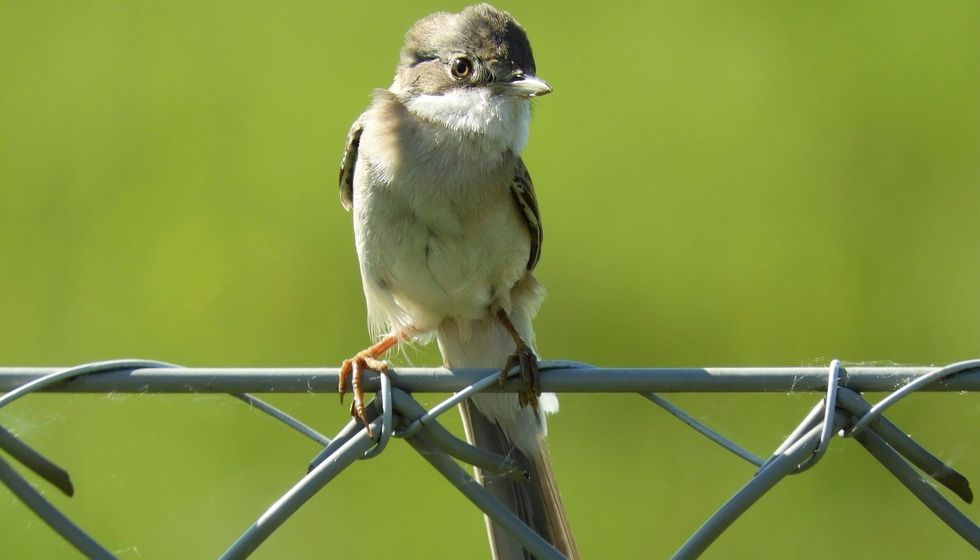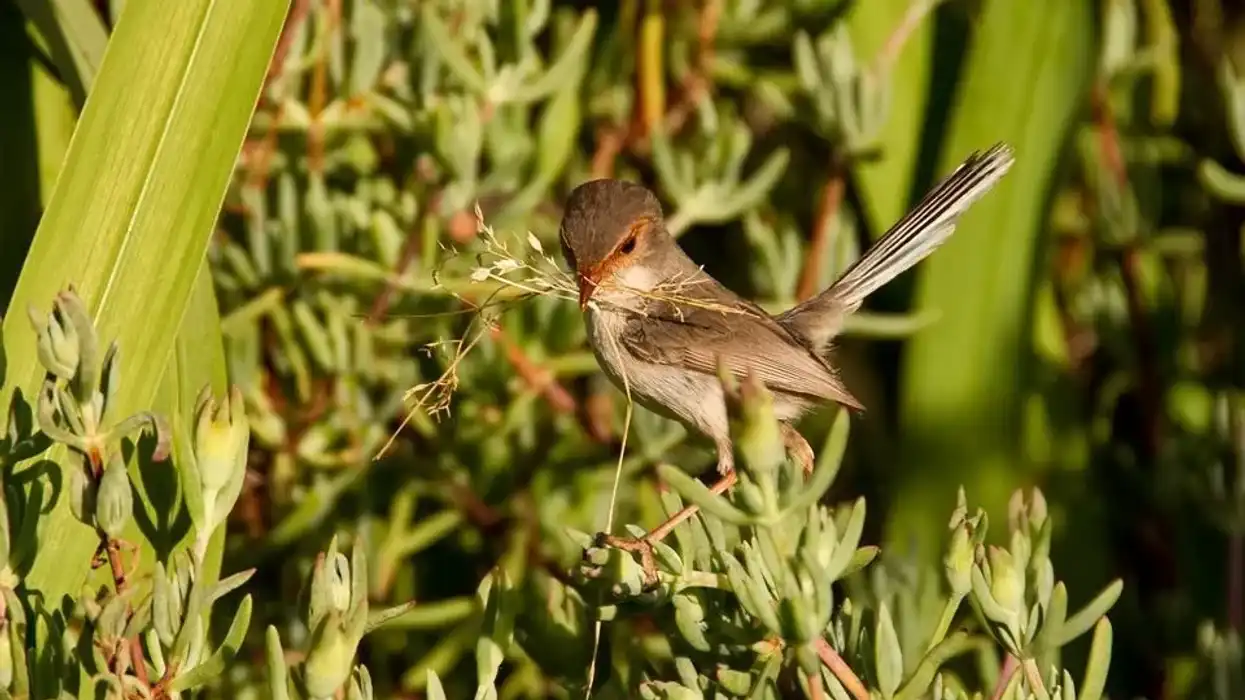Whitethroat is an old-world migratory bird that is divided into two broad classifications, the lesser whitethroat, and a more commonly visible species known as the greater whitethroat. The greater whitethroat is popularly referred to by the name common whitethroat.
It is a medium-sized warbler with a long tail and is distinguished from the lesser whitethroat species by some typical physical differences. As they are spread over a large territory, whitethroats are also known by some other common local names like hay jack, beardie, and nettle creeper.
Common whitethroats have a wider population as they do not show any endemic characteristic of restricting themselves to a particular area.
Europe has the highest number of these birds followed by Asia. In 1968, a drought in the Sahel zone reduced the population of these warblers by 90%.
A large number have been restored since the set back however in many places recovery is still required. If you are interested to know more about the species of common whitethroats, you can go through these amazing facts.
For similar content check out these toco toucan facts and little bee-eater facts too.
Common Whitethroat Interesting Facts
What type of animal is a Common Whitethroat?
Common whitethroat is a type of warbler of Europe and Africa.
What class of animal does a Common Whitethroat belong to?
Common whitethroat (Curruca communis) belongs to the class Aves.
How many Common Whitethroats are there in the world?
The number of breeding pairs in Europe is estimated to be around 17300000-27800000. The approximate population stands at 34600000-55600000 mature individuals in Europe, 50% of which are distributed in the EU countries. The Asian population is estimated to be around 43300000. Population trends for this bird seem to be stable throughout their range.
Where does a Common Whitethroat live?
The species of common whitethroat (Curruca communis) fly over large stretches of land due to migration so distribution is widespread. The breeding grounds are found in Europe and western Asia while wintering grounds are distributed in Arabia, West Africa, and Southeast Asia.
The warbler spends its winter in Sub-Saharan Africa. Sometimes, although very rare and unlikely, common whitethroats are seen in gardens. They are seen as garden birds during their spring migration.
What is a Common Whitethroat's habitat?
The common whitethroat is found in a large range of habitats except for high mountain ranges. The most preferred habitats of the warbler include grasslands, hedgerows, and scrublands.
Their preference for nettle patches has contributed to coining their name nettle creepers. The nest of whitethroat is fairly deep and made up of roots, twigs, and leaves, and dry in low grass or bush.
Who do Common Whitethroats live with?
Common whitethroats are observed to migrate in flocks however they are found in places where disturbances by intruders are absent.
How long does a Common Whitethroat live?
These old-world species have a very short lifespan. On average, common whitethroats can live up to two years old.
How do they reproduce?
The common whitethroat breeds once it reaches its summer grounds in the United Kingdom and western Eurasian regions. Breeding in European birds starts earlier than those residing in Africa.
The breeding and the laying season starts in April and lasts till June or July depending on the environment. Males build multiple nests for females from which they have to choose one. The male whitethroat performs jerky climbing display flights to draw the attention of females.
After copulating the female lays 3-7 eggs in a single clutch that are incubated by both parents for 12 days. The parents take care of the young until it fledges from the nest after 12-14 days.
What is their conservation status?
Common whitethroats are enlisted as a species of Least Concern in the International Union for Conservation of Nature or the IUCN Red List. Although formerly this bird has been threatened by alterations of nature like the drought in the Sahel region, at present this species is available in abundance throughout their range.
Destruction of nature has also caused a decline in certain parts of Europe. However, due to such large distribution, they do not fall under the threshold of vulnerable species.
Common Whitethroat Fun Facts
What do Common Whitethroats look like?

The common whitethroat (Curruca communis) is a medium-sized bird with a long tail. The rusty brown fringes on their wing feathers and the long and narrow square tail help identify greater whitethroats from the lesser whitethroat.
The lesser whitethroat has a grey-toned head and body, which becomes darker around the ear coverts and lores. The longer-length tail feathers make common whitethroats look elongated.
The male bird has a slightly grayer head, whereas, in the female bird, the brown color in their wings continues to its head. The young also have a brown head.
Their throat is white, with pinkish underparts in males and buffish underparts in females. Their outer tail feathers are highlighted with white and their eyes are bounded by a white ring which is more prominent in a male.
How cute are they?
The small size, jaunty songs, and small pale throat make the bird look cute and favorable for many.
How do they communicate?
Common whitethroats are identified by the sound of their singing from the tops of hedgerows. They make different types of sounds that help them to communicate. When they become aggressive they make a churring sound while a long pulled crying sound is used to alarm their mates. In general, they make a sweet nasal sound.
How big is a Common Whitethroat?
The common whitethroat is a sparrow-sized bird with an average length of 5.5 in (14 cm). They are similar in size to lesser whitethroat but their tails are slightly longer.
How fast can a Common Whitethroat fly?
The common whitethroat is a fast-flying jovial bird but its flying speed is unknown.
How much does a Common Whitethroat weigh?
The weight of common whitethroat varies between 0.5-0.6 oz (13-18 g).
What are the male and female names of the species?
The male and the female species of the common whitethroat are respectively referred to as cock and hen.
What would you call a baby Common Whitethroat?
The babies of common whitethroats are known as chicks or hatchlings.
What do they eat?
The diet of common whitethroats mainly includes invertebrates and insects. They also feed on fruits like berries.
Are they poisonous?
No, these birds are known to be not poisonous.
Would they make a good pet?
The common whitethroats do not make good pets. This small bird is a highly migratory one, so confining them to a restricted area is brutality.
Did you know...
Males reach the nests earlier than the females and start the nest-building process before the partner arrives. They thrive on berries during migration.
Do Common Whitethroats migrate?
The common whitethroats are highly migratory birds in nature. They migrate to their wintering ground in the Sahel region located south of the Sahara desert.
When the summer sets in, the birds move to the United Kindom. The summer migration takes place around mid to late April. They again leave for their wintering grounds in August and the process continues till September.
Spring and autumn migrations are common in such warbler species. It is during this time that the birds visit various gardens and farms on their way to the migrating lands and as a result, they are also famous as garden birds.
Where do Common Whitethroats nest?
The common whitethroat makes its breeding nests in low open bushes and hedgerows including brambles as well as tall weed-covered regions, and in open cultivations.
Here at Kidadl, we have carefully created lots of interesting family-friendly animal facts for everyone to discover! Learn more about some other birds including greater sage grouse facts and Umbrellabird facts.
You can even occupy yourself at home by drawing one on our common whitethroat coloring pages.










